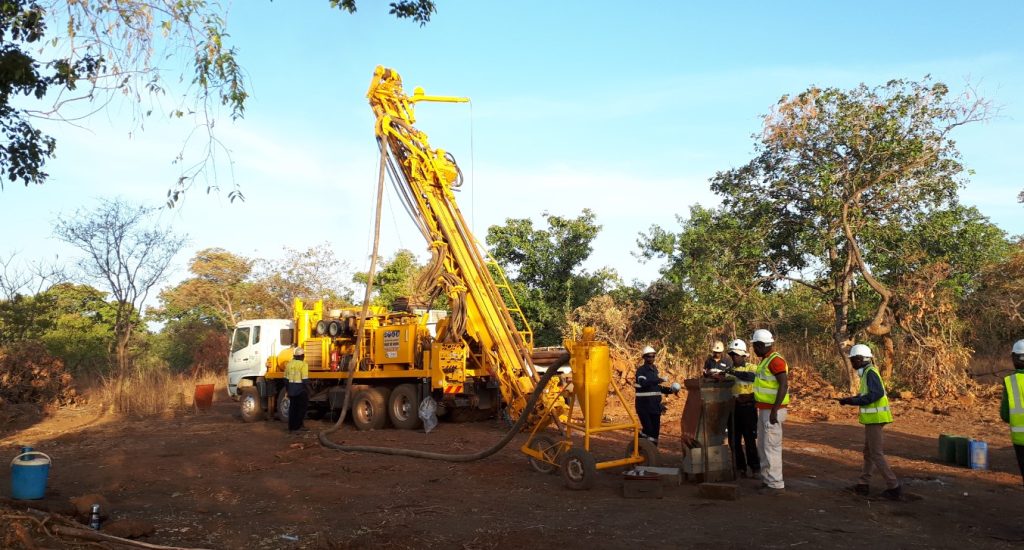Compass Gold drills 3.3 g/t gold over 13 metres at Sikasso, Mali

Compass Gold Corp. [CVB-TSXV] provided an update on additional assay data on recently completed deep reverse circulation drilling, and surface channel and grab sampling at the Tarabala prospect, located on the company’s Sikasso property in southern Mali, West Africa.
Highlights: Coarse-grained nuggety gold is confirmed at Tarabala, and likely present at other locations along the Tarabala trend The best interval with increased gold was 19 metres at 1.68 g/t gold (from 170 m), compared with 0.84 g/t gold from cyanide extraction (an increase of 200%).
Nuggety gold shown to occur in fresh rock at depth, and not solely in the near-surface weathered laterite. Metallic screen fire and cyanide extraction assay results are in good overall agreement; reconfirms that mineralization remains open at depth and along strike.
The company is considering the development of a small mining operation on high-grade near-surface gold mineralization to generate a near-term revenue stream.
Larry Phillips, CEO, said: “While our primary goal has always been to discover a large, open-pittable gold deposit in Mali, our technical team has successfully identified several exciting wide, near-surface mineralized trends, typically containing gold grades of about one g/t Au. These are outstanding results, as many of the largest mines in West Africa are producing gold at grades of between 0.75 and 1.1 g/t gold. In fact, the drilling and assaying we have recently completed on our Tarabala prospect have clearly demonstrated the potential to develop one or more small, near-surface mines which could generate ongoing revenue to fund the exploration work required to develop a far larger, open-pittable gold resource.”
Dr. Madani Diallo, director and country manager, added: “During our ongoing quest to uncover an open-pitiable, high-grade gold deposit, we have completed 20,000 metres of drilling and intercepted several large sections of lower-grade mineralization along the 20-km-long Massala-Tarabala-Moribala trends. We are excited about working to define open-pittable, low-grade gold resources that are easy to mine and process with an appropriate plant as done elsewhere in the region, such as AngloGold Ashanti’s Siguri mine in Guinea, which has been mining gold from a series of 18 pits at average grades of less than one g/t Au since 2008. Such operations are particularly attractive at a time when the gold price is approaching US$2,000/ounce.”
Dr. Sandy Archibald, PGeo, Technical Director, added, “Our latest results are extremely encouraging and continue to validate our view that, due to the presence of nuggety gold along our mineralized trends, conventional fire assaying has very likely under-reported gold grades within the main target zones like Tarabala. We look forward to further testing the open structure along strike and down dip.”
Compass plans to collect and test a series of large (10-15 kg) channel samples from existing surface workings at the Tarabala prospect to test gold recoveries from the near-surface zone. If results are positive, additional channel samples will be collected at prospects along the Tarabala and Moribala trends.
The company is also finalizing plans for a deep trenching and pitting program at the main Tarabala prospect to develop the optimal scenario for mining gold from the near-surface laterite. This program will involve the excavation of five 5-metre deep, and 100-metre long trenches, and the collection and analysis of the recovered 1 m channel samples. In addition, a series of 5-metre deep pits will be dug every 20 metres between the trenches and the channels sampled and analyzed for gold.
Important takeaways from the work are: coarse gold is present in bedrock samples, grades are generally higher in the MSFA samples, and grades in the widest intervals are greater than 1 g/t gold.
A total of 22, 5 kg surface samples (12 channel and 10 quartz vein grab) were collected from four areas over a strike length of 600 metres of artisanal workings at Tarabala in March 2023.
Four samples collected 80 metres north of the channel samples on the main north-south veins system averaged 0.58 g/t gold (cyanide) and 0.50 g/ gold (MSFA). Two samples collected to test east-west cross-cutting veins contained 0.10 g/t gold (cyanide) and 0.09 g/t gold (MSFA).
Two samples of mineralization sampled 450 metres south of the channel sample location averaged 0.78 g/t gold (cyanide) and 0.56 g/t gold (MSFA). The final samples collected were an additional 50 metres to the south, with the highest grade recorded being 5.38 g/t gold (cyanide) and 7.35 g/t gold (MSFA). The sampling locations are close to where an air core drill hole intercepted 5 metres of 2.86 g/t gold (from 8 m, SAAC083) in December 2020.
Through the 2017 acquisition of MGE and Malian subsidiaries, Compass holds gold exploration permits in Mali comprising the Sikasso property. The exploration permits are located in three sites in southern Mali with a combined land holding of 1,173 km2.
